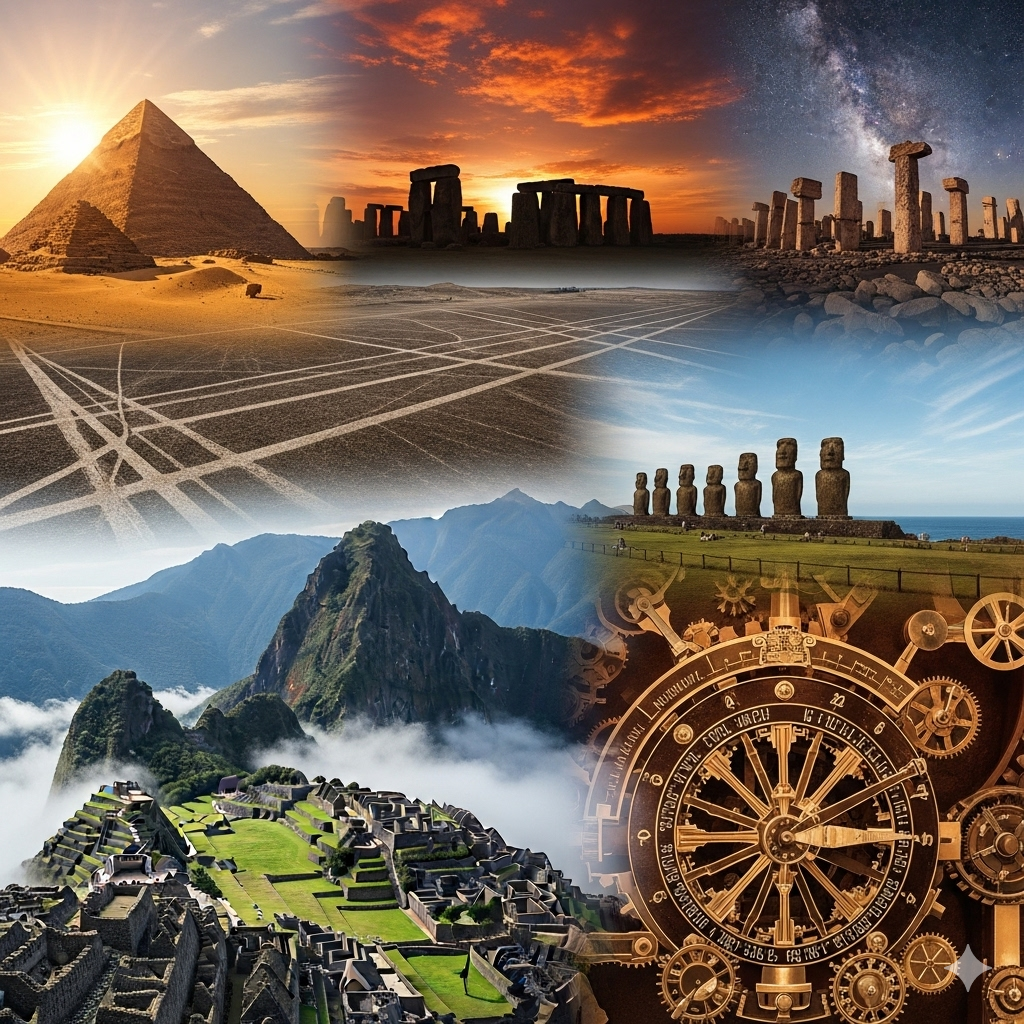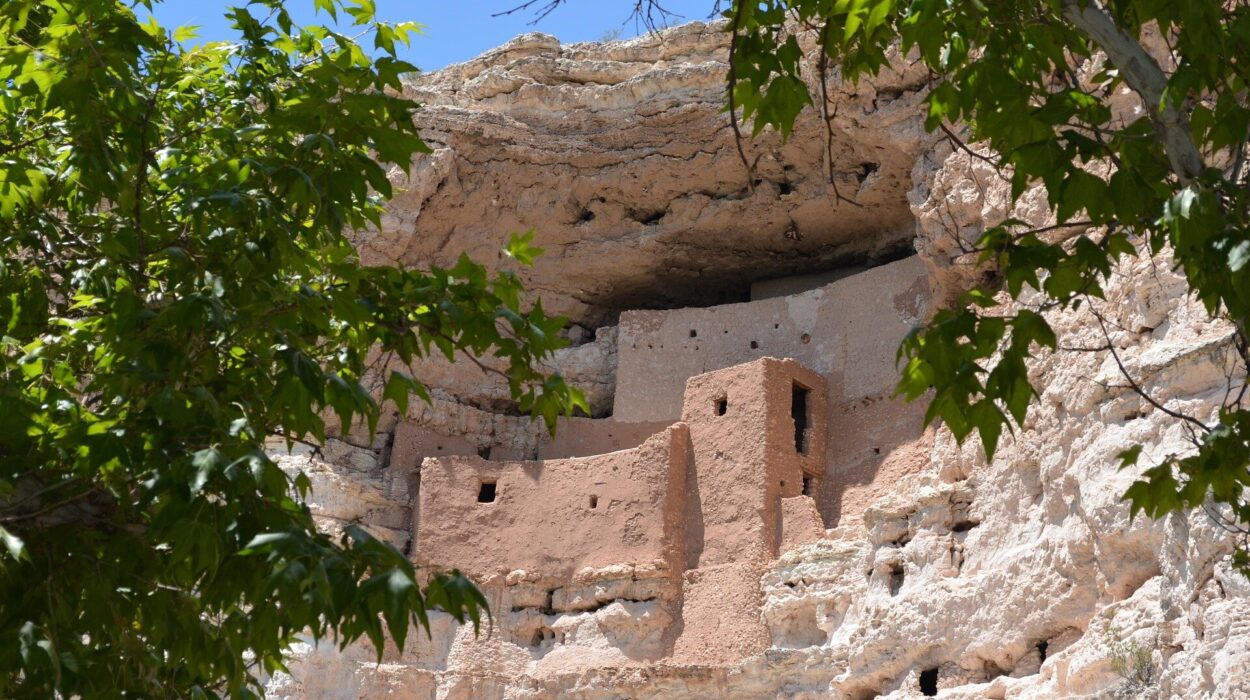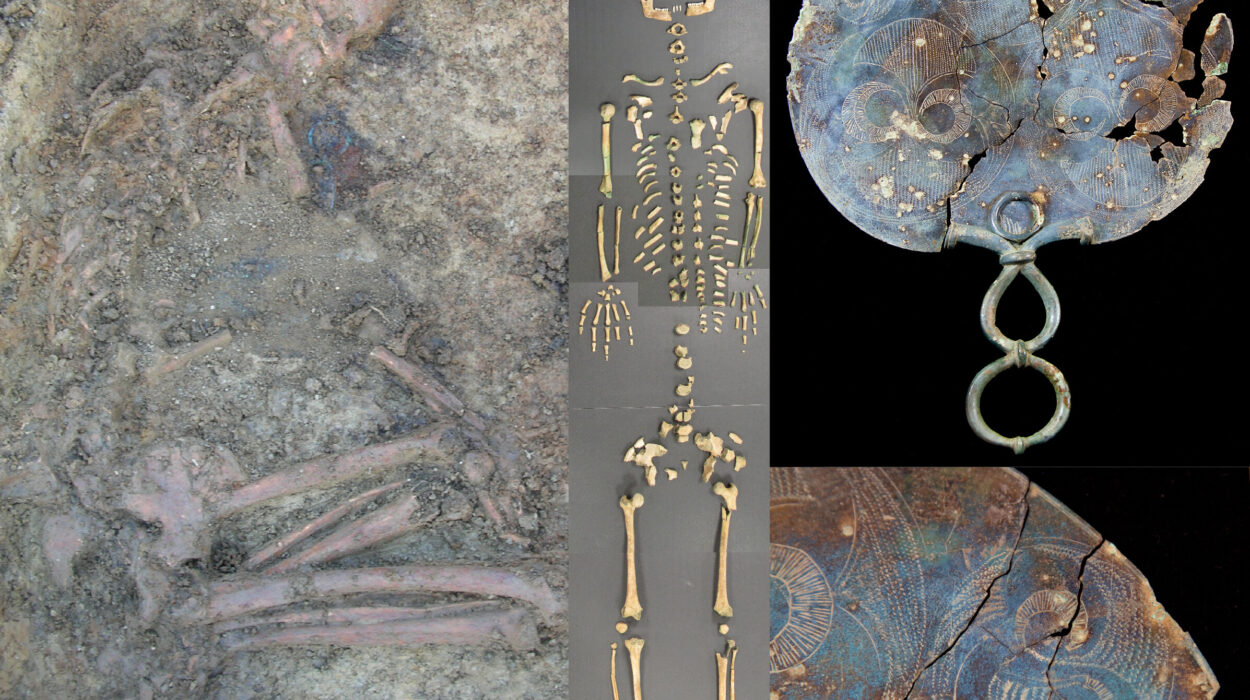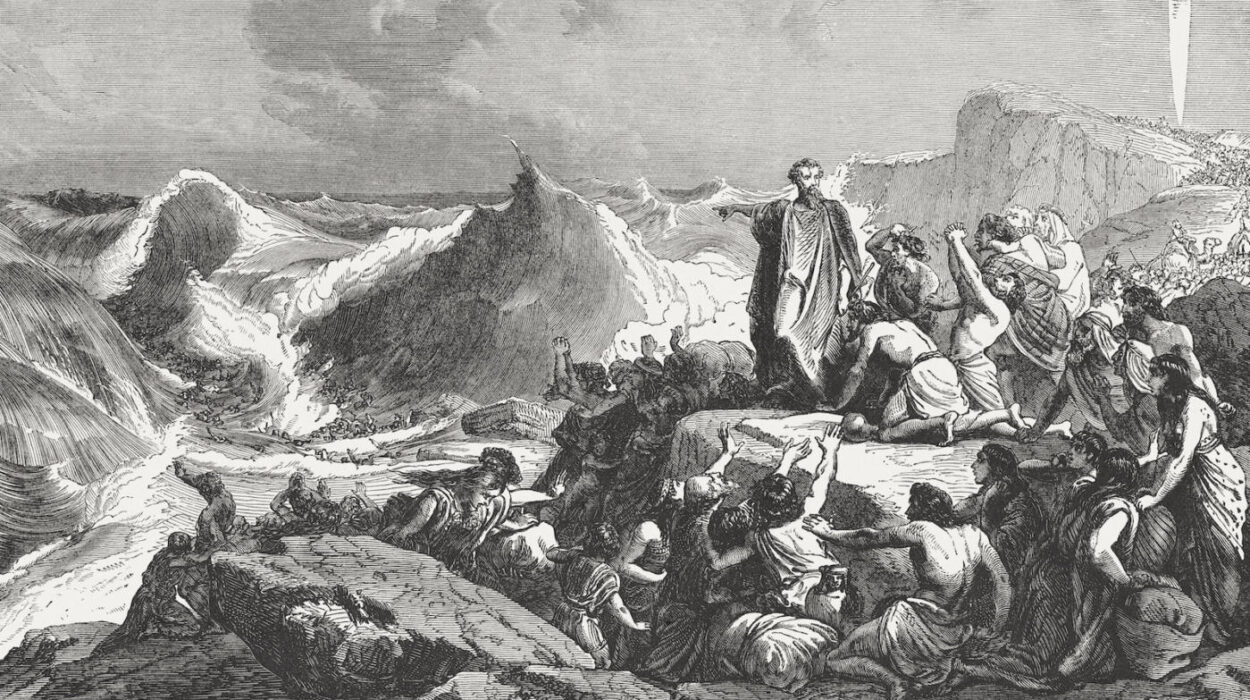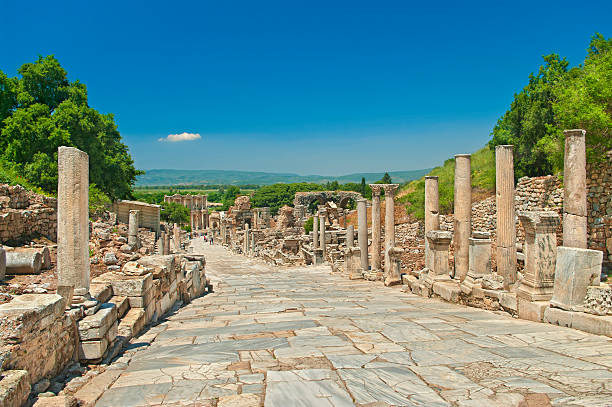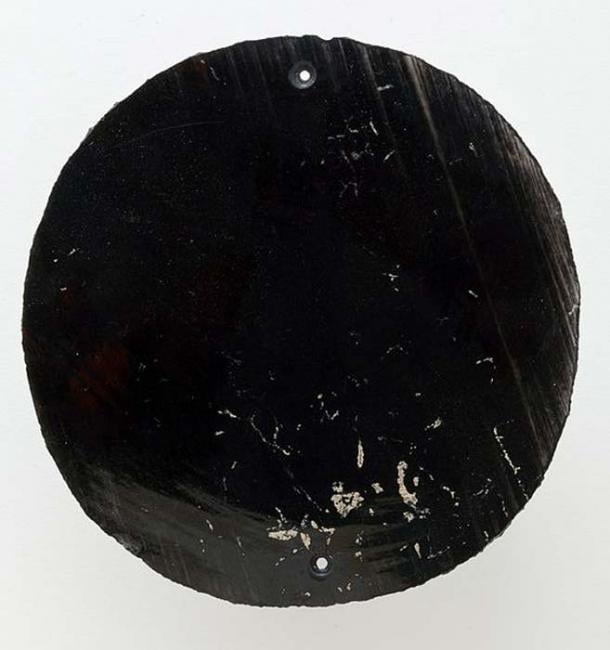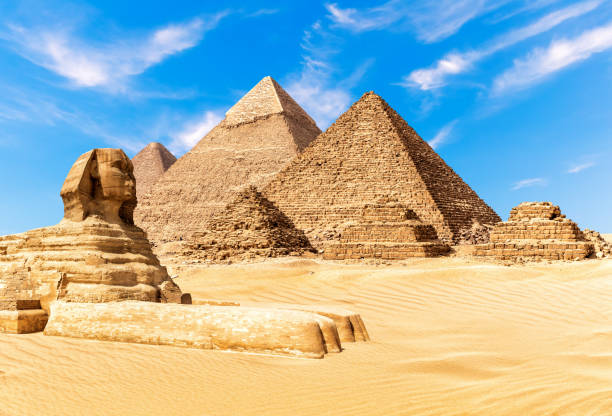Human history is a tapestry woven not only with triumphs and discoveries but also with mysteries that continue to elude explanation. Across the world, scattered across deserts, mountains, jungles, and beneath the seas, lie monuments, artifacts, and ruins so complex, so advanced, and so enigmatic that even with modern technology, they remain puzzles. These ancient wonders are more than just relics of the past—they are silent witnesses to human ingenuity, ambition, and imagination.
Science has made extraordinary progress in decoding the past, using tools from archaeology, engineering, and physics to understand how ancient societies built their cities, created their art, and cultivated their lands. Yet some sites resist complete explanation. Their construction methods, their alignment with celestial patterns, their inexplicable precision, or their very existence at a certain point in history seem to defy what we thought possible.
These mysteries inspire awe, not only because of their grandeur but because they reveal that the people of the past were capable of achievements we still struggle to replicate. They remind us that history is not a straight line of progress, but a story full of lost knowledge, rediscovered wisdom, and unanswered questions.
The Great Pyramid of Giza: A Monument to Eternity
Towering above the Egyptian desert, the Great Pyramid of Giza is perhaps the most iconic symbol of ancient achievement. Built around 4,500 years ago for Pharaoh Khufu, it is the last surviving wonder of the ancient world. Even after centuries of study, the pyramid remains shrouded in mystery.
The sheer scale of the structure is staggering: nearly 2.3 million stone blocks, some weighing up to 80 tons, were transported, cut, and assembled with astonishing precision. The base is almost perfectly square, aligned to the cardinal points with remarkable accuracy. Modern surveyors have found that its sides deviate by only fractions of a degree, an alignment that rivals contemporary engineering.
Despite countless theories, we still do not fully understand how the pyramid was built. Some propose massive ramps, others suggest internal spirals, and still others speculate about lost techniques. What baffles researchers further is the level of mathematical knowledge encoded in its design. The pyramid’s proportions reflect an understanding of geometry and possibly even the constant pi, leading some to wonder if its builders possessed more advanced knowledge than we assume.
The interior chambers add to the enigma. Hidden passageways, unexplained voids discovered by modern scanning technology, and the mysterious alignment of shafts with certain stars suggest that the pyramid was not only a tomb but also a cosmic symbol. Whether it was designed to guide the pharaoh’s soul to the afterlife, to mirror the heavens on Earth, or to preserve some forgotten knowledge, the Great Pyramid continues to stand as a riddle carved in stone.
Stonehenge: A Circle of Silence and Stars
On the plains of Salisbury in England, a ring of massive stones has stood for more than 4,000 years. Stonehenge is one of the most famous prehistoric monuments in the world, yet its purpose remains elusive.
The monument’s design reveals deep astronomical connections. On the summer solstice, the sun rises directly above the Heel Stone, casting its rays into the heart of the circle. This alignment suggests Stonehenge may have functioned as a calendar or observatory, allowing ancient people to track the movements of the sun and moon. But the precise significance of these alignments remains debated.
The stones themselves pose questions. Some weigh over 25 tons, and the nearest quarry lies miles away. Transporting them across rivers and land without modern machinery would have required immense organization and ingenuity. The smaller “bluestones” were transported from Wales, nearly 150 miles away, leading some to believe that their placement was linked to ritual or healing properties.
Stonehenge is more than just a circle of stones—it is part of a larger sacred landscape, with burial mounds, avenues, and smaller stone circles stretching across the countryside. This suggests that it was the heart of a vast ceremonial complex. Whether it was a temple, a gathering place, or a bridge between the earthly and the cosmic, Stonehenge continues to whisper a story that science has not yet fully translated.
The Nazca Lines: Messages Across the Desert
In the arid deserts of southern Peru, enormous figures are etched into the ground—giant geoglyphs stretching for miles, depicting animals, plants, and geometric shapes. Known as the Nazca Lines, these ancient artworks were created by removing the dark surface stones to reveal the lighter soil beneath. Despite their apparent simplicity, they remain one of archaeology’s greatest mysteries.
The Nazca Lines are so vast that they can only be truly seen from the air, yet they were made between 500 BCE and 500 CE, long before flight was possible. Why were they created? Some suggest they were ritual pathways used in ceremonies to call upon the gods for rain in this desert environment. Others believe they may represent astronomical calendars, mapping the movements of celestial bodies.
The scale of the lines is extraordinary. One figure, the hummingbird, stretches nearly 300 feet. Straight lines run for several miles with uncanny precision, as if drawn with giant rulers across the desert floor. The fact that the lines have survived for centuries is itself remarkable, preserved by the dry, windless climate.
Even with decades of study, the Nazca Lines resist simple explanation. Were they messages to the gods, symbols for the community, or markers for celestial alignments? Their silent patterns, visible only from above, continue to baffle and inspire awe in equal measure.
Machu Picchu: The Lost City in the Clouds
High in the Peruvian Andes, nestled between jagged peaks and hidden by mist, lies Machu Picchu, the fabled “Lost City of the Inca.” Built in the 15th century, this mountain citadel is one of the most breathtaking achievements of ancient engineering, yet its exact purpose remains debated.
The site contains temples, terraces, plazas, and finely crafted stone buildings, constructed without mortar but fitted so perfectly that even modern blades cannot slip between the stones. The precision of the stonework is staggering, especially considering that the Inca lacked iron tools or wheeled transport. The stones were shaped by pounding and polishing, then hauled up steep slopes, an achievement that challenges modern engineers.
Machu Picchu’s location adds to the mystery. It sits on a ridge nearly 8,000 feet above sea level, surrounded by sheer cliffs and accessible only by narrow paths. Why build such a magnificent city in such a remote place? Some scholars believe it was a royal estate for the emperor Pachacuti; others suggest it was a religious sanctuary aligned with sacred mountains and celestial events.
The terraces at Machu Picchu reveal a sophisticated understanding of agriculture, designed to prevent erosion and create microclimates for different crops. The city’s alignment with astronomical events suggests that it may have functioned as a ceremonial center as well.
When the Spanish conquered the Inca Empire, they never discovered Machu Picchu. It remained hidden until its rediscovery in the early 20th century. Today, it stands as both a marvel of engineering and an enduring enigma.
The Moai of Easter Island: Giants of Stone and Silence
Far out in the Pacific Ocean, on the remote island of Rapa Nui, stand nearly 900 colossal stone statues known as moai. Carved by the island’s Polynesian inhabitants between the 13th and 16th centuries, these statues range from a few feet to over 30 feet tall, with some weighing more than 80 tons. Their enigmatic faces stare silently across the landscape, embodying a mystery that has fascinated the world.
The moai are believed to represent ancestral chiefs, embodying spiritual power and authority. Yet their construction and transportation raise difficult questions. Without wheels, metal tools, or large animals, how did the Rapa Nui carve and move such massive figures across the island? Some theories suggest they were “walked” upright using ropes in a rocking motion, a feat replicated in experiments but still astonishing in scale.
The island itself bears the marks of environmental collapse. Deforestation, soil erosion, and resource depletion may have contributed to the decline of Rapa Nui society. For centuries, the moai stood as silent guardians, but their creation may also reflect the tensions of a society striving to assert identity and power in the face of growing challenges.
Today, the moai continue to puzzle researchers. Why were so many left unfinished in quarries? Why do some face inland while others face the sea? The answers remain elusive, leaving the moai as monuments not only to craftsmanship but also to mystery.
Göbekli Tepe: The World’s First Temple?
In southeastern Turkey lies a site so ancient and so revolutionary that it has rewritten our understanding of human history. Known as Göbekli Tepe, this archaeological site dates back more than 11,000 years—millennia before the pyramids or Stonehenge. Its massive stone pillars, carved with animals and abstract symbols, are arranged in circles that suggest ritual or ceremonial use.
What makes Göbekli Tepe so baffling is its timing. It predates agriculture and permanent settlements, yet it required organized labor, architectural knowledge, and artistic skill. The prevailing view had long been that religion and monumental architecture emerged after farming created stable communities. Göbekli Tepe suggests the opposite: that the drive to build sacred spaces may have inspired the development of agriculture.
The carvings on the stones are rich with symbolism—lions, snakes, vultures, and other animals depicted with striking artistry. The site was deliberately buried after centuries of use, for reasons that remain unknown. Was it abandoned, ritually sealed, or hidden from enemies?
Göbekli Tepe forces us to reconsider the origins of civilization. It reveals that humans were capable of building monumental structures long before we thought possible, challenging our assumptions about what “primitive” societies could achieve.
The Antikythera Mechanism: A Clockwork of the Ancient World
In 1901, divers exploring a shipwreck off the Greek island of Antikythera discovered a corroded bronze object that would come to be known as the Antikythera Mechanism. At first glance, it seemed like little more than a lump of metal, but closer study revealed intricate gears and components. What emerged was nothing short of astonishing: an ancient analog computer, built more than 2,000 years ago.
The Antikythera Mechanism could predict eclipses, track planetary movements, and model the cycles of the sun and moon. Its precision rivals that of clocks made more than a millennium later. Yet no other artifact from the ancient world demonstrates such advanced mechanical engineering.
The device challenges our understanding of Greek science and technology. How could such knowledge exist, then vanish, without leaving a trail of similar machines? Was the Antikythera Mechanism unique, or the last surviving example of a lost tradition?
Even with modern imaging techniques, not all of its functions have been decoded. Some researchers believe it may have also tracked the timing of athletic games such as the Olympics, weaving together science, religion, and culture in one intricate device. Whatever its full purpose, it remains one of the greatest scientific mysteries of the ancient world.
The Lingering Questions of Human Achievement
These wonders—from pyramids and stone circles to geoglyphs and clockwork devices—share one common thread: they challenge the limits of what we thought was possible in the ancient world. They remind us that human ingenuity did not begin with modern technology. Instead, our ancestors possessed knowledge, skills, and visions that allowed them to shape their worlds in ways that still astonish us.
Modern science continues to chip away at these mysteries, offering new insights and possibilities. Yet the beauty of these wonders lies not only in their answers but in their questions. They inspire curiosity, humility, and a sense of connection to the vast sweep of human history.
Perhaps one day, with further discoveries and advances, we will finally understand how every stone was moved, every symbol carved, every gear crafted. Until then, these ancient wonders will continue to baffle and inspire, reminding us that the past is not simply behind us—it is alive in the mysteries that still stand, waiting for us to listen.
